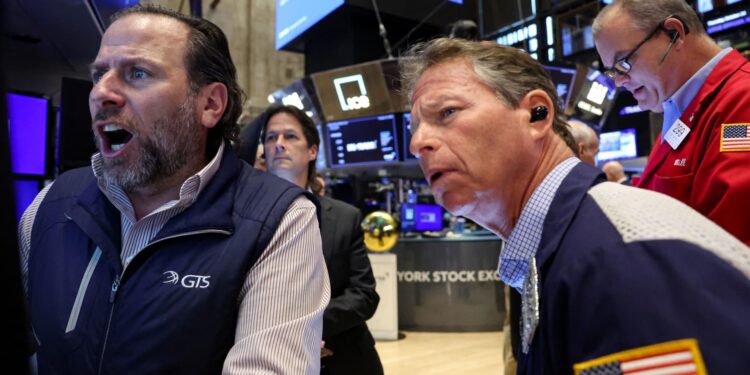Bond market investors are having trouble figuring out an economy that looks good from 30,000 feet, but less so closer to the ground. Treasury yields have been surging over the past month or so, even with Thursday’s decline , helping pull down stocks this week. While a variety of reasons have been cited, one of the most popular is the simple notion that the Federal Reserve is closer to achieving its much-touted soft landing in which it can use high interest rates to bring down inflation without wrecking the broader economy. Higher growth expectations generally translate into higher bond yields. Virtually all of the macroeconomic data lately has supported that thesis. Whether it’s payrolls, gross domestic product or retail sales, or a host of other measures, growth looks solid, at the very least. Thursday brought fresh news that layoffs are not accelerating, the Atlanta Fed is tracking 3.4% GDP growth in the third quarter and recent retail sales data indicate that consumer spending is holding up. Goldman Sachs economists think the strong growth prospects are driving yields higher as traders sell the safe-haven of bonds. The investment bank said that is a more likely reason than other commonly cited factors that include rising expectations for a Donald Trump victory in the presidential race, or fears that Fed rate cuts will reignite inflation. “Yields have risen significantly over the past several weeks, which we find has owed primarily to continued strong U.S. growth momentum rather than shifts in election odds,” Goldman said in a recent note. In fact, Goldman thinks the Fed will keep cutting, lopping off 25 basis points at each of its six meetings between now and next June. Still, all of the fanfare over the macro data comes with other indicators showing cracks in the floor. The Fed’s Beige Book release on Wednesday, often ignored on Wall Street, took up a lot of oxygen in commentary as strategists and economists noticed the generally downbeat tone. The report, which comes out every seven weeks, summarizes what business owners are telling their regional Fed officials about business conditions. Broadly speaking, respondents said economic growth was “little changed” since the last report came out in early September. Looking under the hood, though, manufacturing is “declining,” banking activity appeared slow, commercial real estate was “generally flat” while both the agricultural and energy sectors reported conditions flat to “down modestly.” The jobs picture was nothing to brag about either, with more than half the 12 Fed districts seeing “slight or modest growth” in hiring though there were scant indications that layoffs are accelerating. Then there’s the election: The hotly contested presidential race garnered more than a dozen mentions in the Fed report, mostly reflecting a hesitance to commit to new investment pending the outcome, but with some saying it could be an opportunity. On Wall Street, the general view was of concern: The Beige Book “showed no material improvement in a generally bleak outlook,” Citigroup economist Andrew Hollenhorst wrote. “In contrast to the sturdy employment and retail sales reports for September, the anecdotal readings from [the] Fed’s Beige Book depict little economic growth across much of the country,” Nationwide chief economist Kathy Bostjancic wrote. Addressing the conflict between macro data via the big economic measures and anecdotal reports like the Beige Book, Peter Boockvar, the chief investment officer at Bleakley Financial Group, commented: “My only conclusion is that the huge amount of government spending with it exceeding receipts by $1.8 trillion or about 6% of GDP is completely distorting the overall data.” A confused market has sent yields up more than 50 basis points in just over a month since the Fed cut benchmark rates by 50 basis points, or half a percentage point. If the economy improves, the Fed could be discouraged from cutting too quickly for fear that growth could get too strong and reaccelerate inflation. However, if growth deteriorates, as the Beige Book indicates it has, that likely would push the Fed towards more reductions. At his September news conference, Fed Chair Jerome Powell placed emphasis on the Beige Book as a gauge policymakers will follow when determining how to follow the outsized rate reduction in September. “Overall, the Fed’s most likely assessment after interactions with its regional contacts is that they need to keep cutting rates in the coming months to achieve their ‘soft landing,'” wrote Nicholas Colas, co-founder of DataTrek Research. “Despite recent stronger-than-expected data on U.S. employment, retail sales, and consumer inflation, the Fed’s latest Beige Book signals a still weakening economy.”






